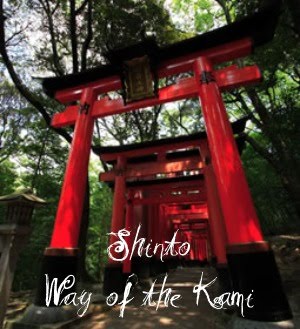1. Tradition and the Family.
family is the main mechanism by which traditions are preserved celebrated mainly through weddings and births
2. Love of Nature
nature is sacred to be in contact with nature is to be in contact with the gods
3. Physical Cleanliness
- The most common form of purification is ablution (Misogi) where followers of Shintoism take baths, wash their hands and rinse out their mouths before worshiping in a shrine
4. Matsuri
- the worship and honor given to the Kami and ancestral spirits
- Kami are spirits found in every living creature, natural object, or deceased spirit which while not entirely similar, might be compared to the western idea of the soul
- Izanagi (male) and Izanami (female) are the two kami from which all else was made, however the closest thing to a 'central' spirit found in shintoism is Amaterasu the female Sun kami.
In addition to having four affirmations, Shintoism also has four main traditions.
1. Koshitsu Shinto (the Shinto of the imperial house)
- Practiced by the Emperor mainly in devotion to Amaterasu (the female sun kami)
2. Jinja (shrine) Shinto
- largest practicing group
- in its original form closely aligned with State-Shinto
3. Kyoha (sectarian) Shinto/Shuha Shinto
- made of up of 13 sects in the late 19th century/20th century
- this division of Shintoism tends to have a cluster of worshipers around one specific diety much like western religions
4. Minzoku (folk)Shinto
- made up of rural practices and rituals
- often seen by road side shrines or tributes

No comments:
Post a Comment